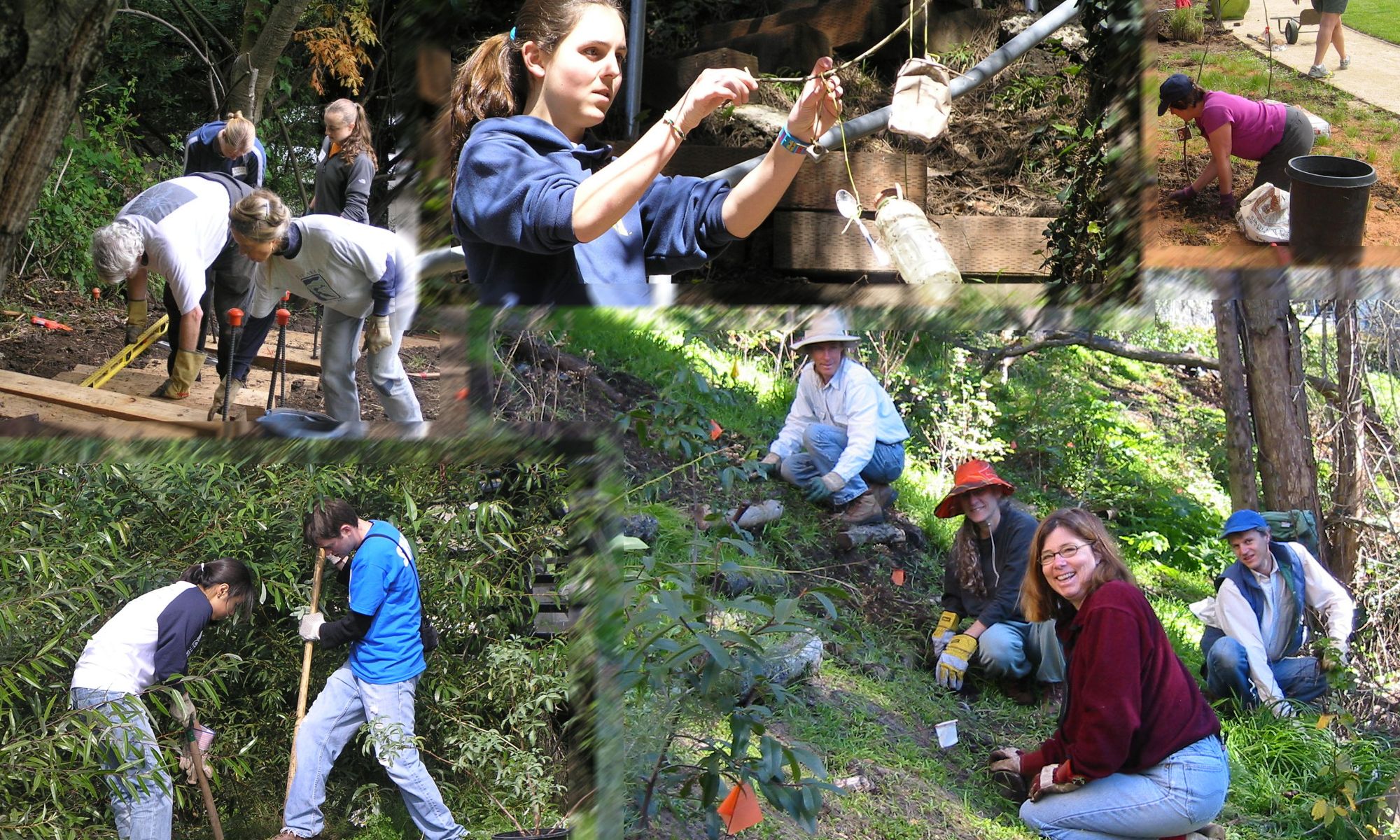BPFP went international recently when Vicki Rostron of Australia wrote asking for information on Hinkel Park, which her great-grandfather John Hinkel donated to the city in 1918. John was a fan of the then-youthful movement of Scouting, and donated the beautiful tract in North Berkeley, with two creeks, on condition that it would remain natural and that Scouts could continue to use it. It seems that John’s son Hulbert Hinkel (John’s wife was Ada Hulbert) was a dashing pioneer aviator, the second man to do an inverted loop in an airplane. He also married five times – one bride, Dorothy Perry of Sydney, Australia, was Vicki Rostron’s grandmother. We sent Vicki background on the park along with a promise of a tour when she comes to visit. We’re looking forward to it!
Hinkel Park is one of Berkeley’s most beautiful and bucolic parks, as cultural geographer, Grey Brechin, attests: “In a lovely canyon studded with live oaks, the Civil Works Administration in 1934 built a four-acre park with an intimate Greek amphitheater, trails, and rustic clubhouse. The eater was used by the Berkeley Community Players for many years and then by the Berkeley Shakespeare Festival, though next year the festival moves to Orinda because of traffic and space problems. Today, the theater’s tree-shaded terraces seem more Druidic than Greek.” (Quoted from “Built by FDR: How the WPA Changed the Lay of the Land”: http://www.graybrechin.com/GBrechinArticle5.html.)
Noted Berkeley historian, Susan Cerny remarks about the donator of the park, ” The land… was given to the city in 1918 by John Hinkel, a downtown property owner. It was reported to be the largest gift the city had ever received…Before giving the property to the city, Hinkel made some notable improvements: he built a rustic redwood clubhouse, a stone fireplace and playground, and also created the network of pathways. The park was conceived by Hinkel to be a natural space where the native flora would be retained and enhanced rather than being replaced it with artificial plantings.” It has retained that original character for the past 90 years. See her article about the park:www.berkeleyheritage.com/berkeley_landmarks/john_hinkel_park.html (See also the photos in this article)

 10th Annual Summer Solstice Gathering
10th Annual Summer Solstice Gathering